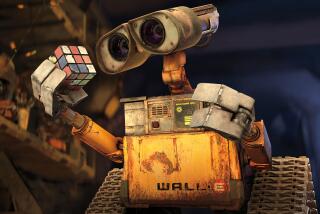Software Designers Look for Connections at Event
- Share via
It may come as some consolation to learn that it’s not just regular folks who think computers and their software are too confusing. Even some of the people who create software agree.
The problem isn’t simply one of inconvenience. Carelessly designed software can have an impact far beyond the desktop, as the multibillion-dollar millennium bug so expensively demonstrates.
“We’re trying to get a way of building software that isn’t destructive and doesn’t lead to things like Y2K,” said Francis Jeffrey, co-founder of the Malibu software firm Elfnet and organizer of a symposium on the topic held during the weekend.
Of course, that’s easier said than done. So the 40 or so people who attended the two-day symposium in Malibu mixed principles of programming with philosophy, sociology and religion.
The result was a commitment to “radical connectionism”--the idea that computers and software work best when they are able to focus on the organic connections among them. That makes computer networks function more like human brains, with the capacity to link relevant pieces of information together and thereby create useful knowledge.
Perhaps the best example of radical connectionism at work, according to symposium participants, is the World Wide Web. After all, it’s not the individual pieces of data on the Web but the links between them that make it such a powerful medium.
“The Web seeks only to connect,” said Mark Pesce, co-creator of the Virtual Reality Modeling Language and a visiting professor of interactive media at the USC School of Cinema-Television. “The Web is a reflection of the human brain. Perhaps it is alive.”
While that possibility might seem absurd to the casual Web surfer, it is very real to Gregory Stock, director of the Program on Medicine, Technology and Society at UCLA’s School of Medicine.
“This isn’t biology as usual,” Stock said. The combination of humans and machines “into a global super-organism” is the biggest evolutionary leap since multicellular organisms came on the scene 700 million years ago, he said.
“Can this creature have a consciousness?” Stock asked. “Yes. It senses conditions and responds to them.”
But that feedback loop isn’t perfect. Several symposium participants expressed strong views that the link between computers and the people they serve must be improved.
“Instead of making humans computer-literate, the question is how are we going to make computers human-literate,” said software designer Robit Hairman. His answer is the Pygmalion System, which he invented to create 3-D animated characters that can converse with people and even understand emotions.
Another offering along those lines is Sylvie, a $15 “Verbot,” or verbal software robot, from Beverly Hills-based Virtual Personalities. The conversational Sylvie lives on a PC and reads incoming e-mail and faxes, keeps track of appointments and performs other tasks befitting a personal digital assistant.
Verbots such as Sylvie “figure out what a human wants, and they are capable of executing computer commands to bring it to him,” said Peter Plantec, Virtual Personalities’ creative director.
But smarter digital assistants are only part of the answer, Hairman said. He suggested that computers, which never make logical mistakes, would be better able to relate to humans if studies on artificial intelligence were augmented by studies on “artificial stupidity.”
*
Karen Kaplan can be reached at karen.kaplan@latimes.com.






